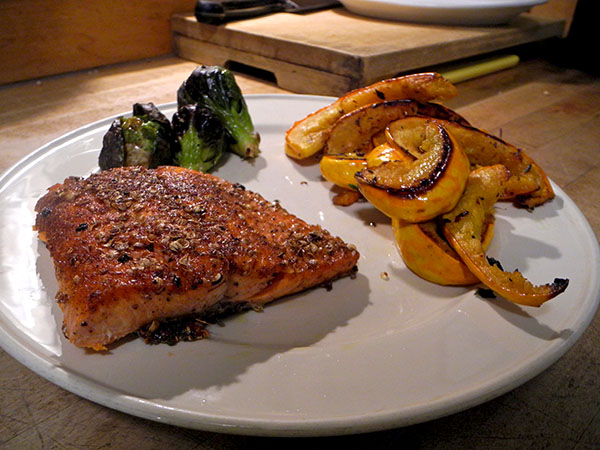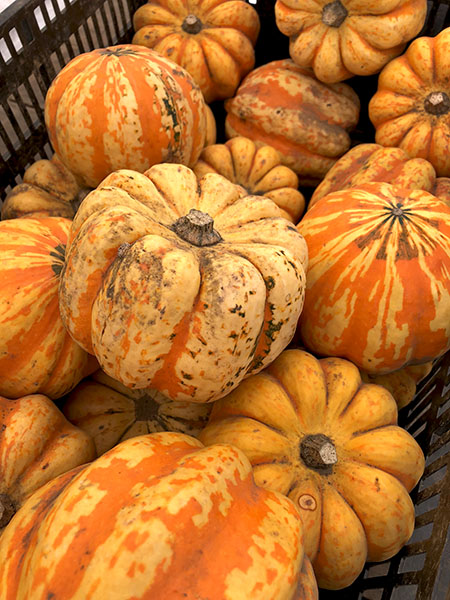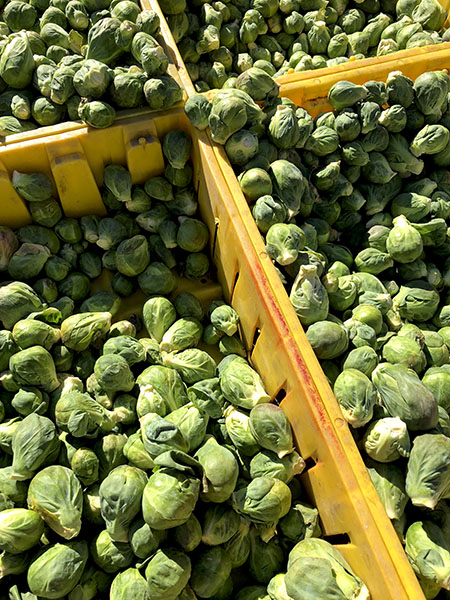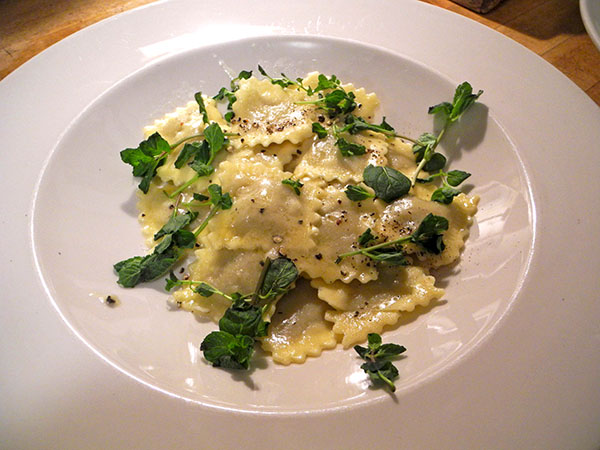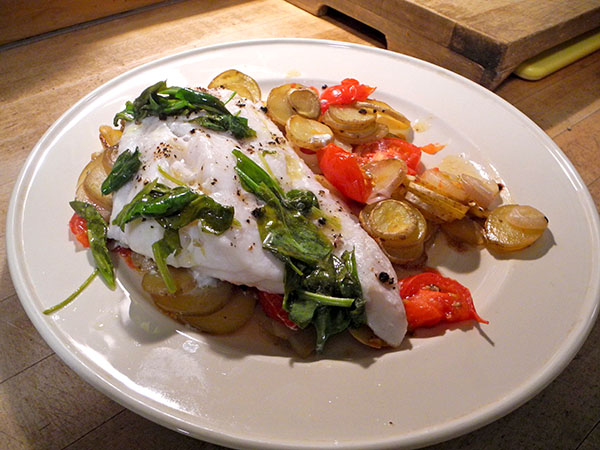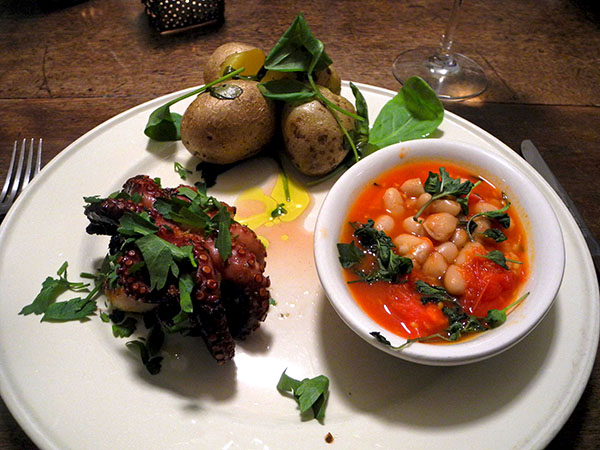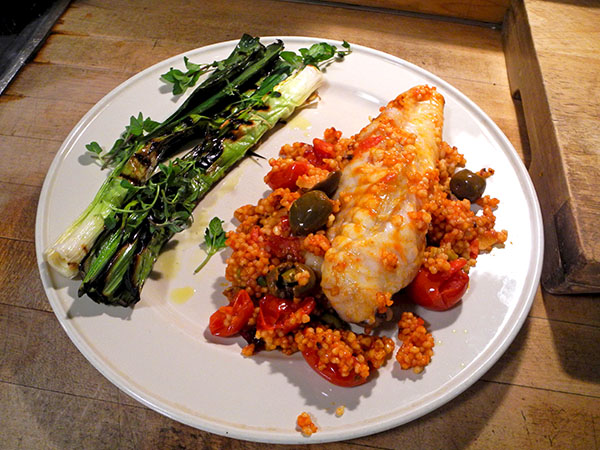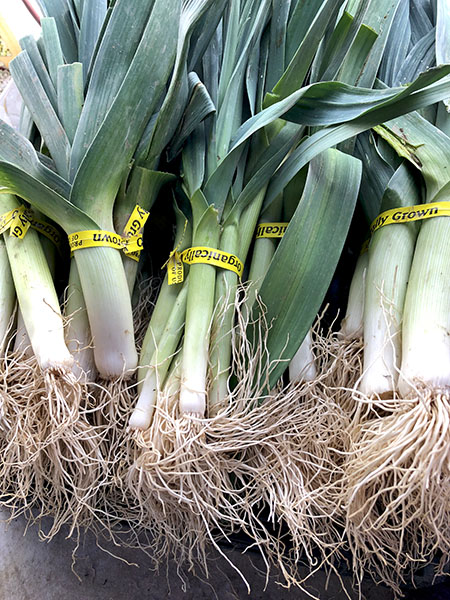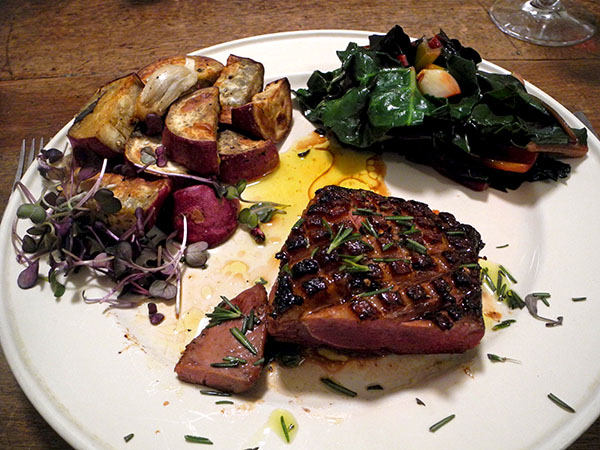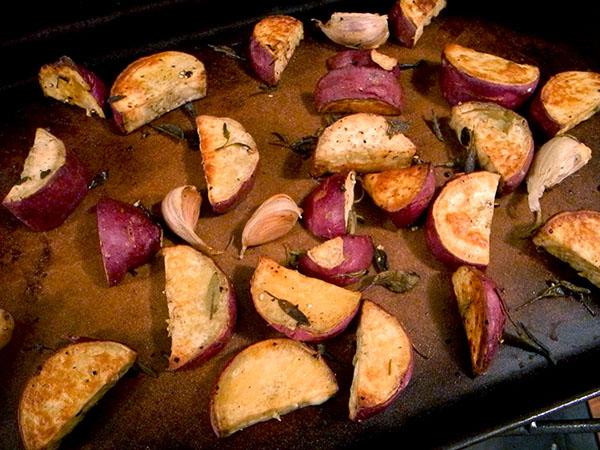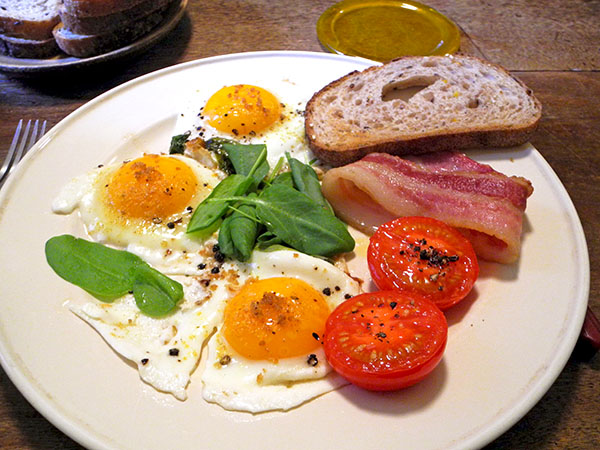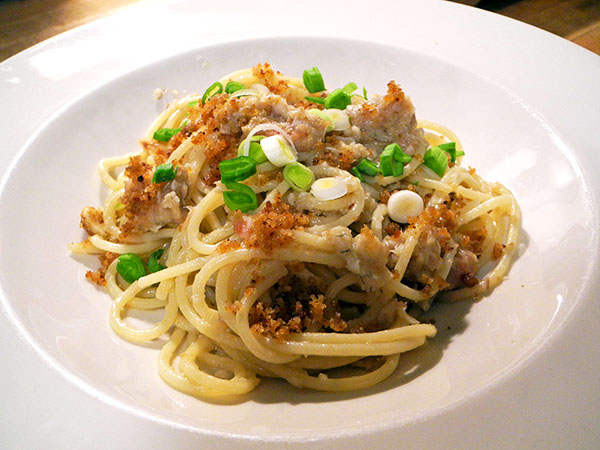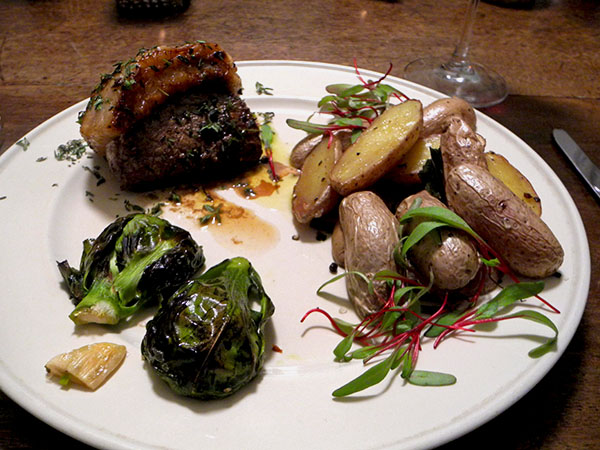
Dinner was culotte/coulotte steak and French fries potatoes, with Brussels Belgian sprouts, to re-classify a few classics, all favorites of ours.
-
one 16-ounce culotte (the American spelling) steak from Greg and Mike of Sun Fed Beef/Maple Avenue Farms in the Union Square Greenmarket, cut crosswise into 2 pieces, brought to room temperature, seasoned on all sides with sea salt and freshly-ground black pepper, seared briefly on the top, or thick fat-covered side (much of the fat is rendered in the cooking, and the rest makes it taste wonderful), inside an oval enameled cast iron pan, then cooked for about 4 minutes on each side, to medium-rare, after which the narrow bottom side was seared briefly, removed from the pan, placed on warm plates, drizzled with juice from an organic Whole Foods Market lemon and some decent olive oil, sprinkled with chopped thyme from Westside Market, and allowed to rest for about 4 minutes
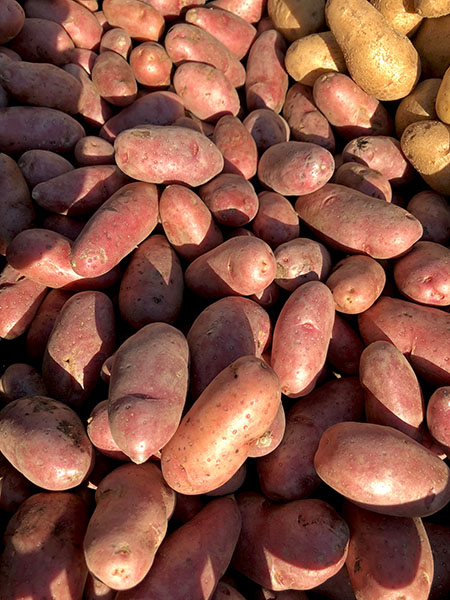
- roughly a pound of French fingerling (also known as ‘Roseval’) potatoes from Mountain Sweet Berry Farm, that had been maturing inside our pantry for over a month, halved lengthwise, tossed with a little olive oil; sea salt; freshly-ground black pepper; sage leaves from Phillips Farms; 3 small bay leaves from Westside Market, broken into pieces; and a small amount of crushed dark, home-dried habanada pepper, arranged cut side down on a large Pampered Chef unglazed ceramic pan, roasted at about 375º for 15 or 20 minutes,, garnished with Micro red chard from Two Guys from Woodbridge
- two large Brussels sprouts from Philipps Farms, each halved, tossed with olive oil, sea salt, freshly-ground black pepper, and two Rocambole garlic cloves from Keith’s Farm, roasted in the same 375º oven until browned and crisp on the outside
- the wine was a California (Napa) red, Sin Fronteras El Mechon Red Blend California 2016, from Naked Wines
- the music was the proto-romantic, “opéra en un acte et en vers imité d’Ossian, Livret de Bin de Saint-Victor“, ‘Uthal’, which was composed by Étienne-Nicolas Méhul and premiered in Paris at the Théâtre de l’Opéra-Comique in 1806, Christophe Rousset conducting the Lyric Talens and the Chamber Choir of Namur
